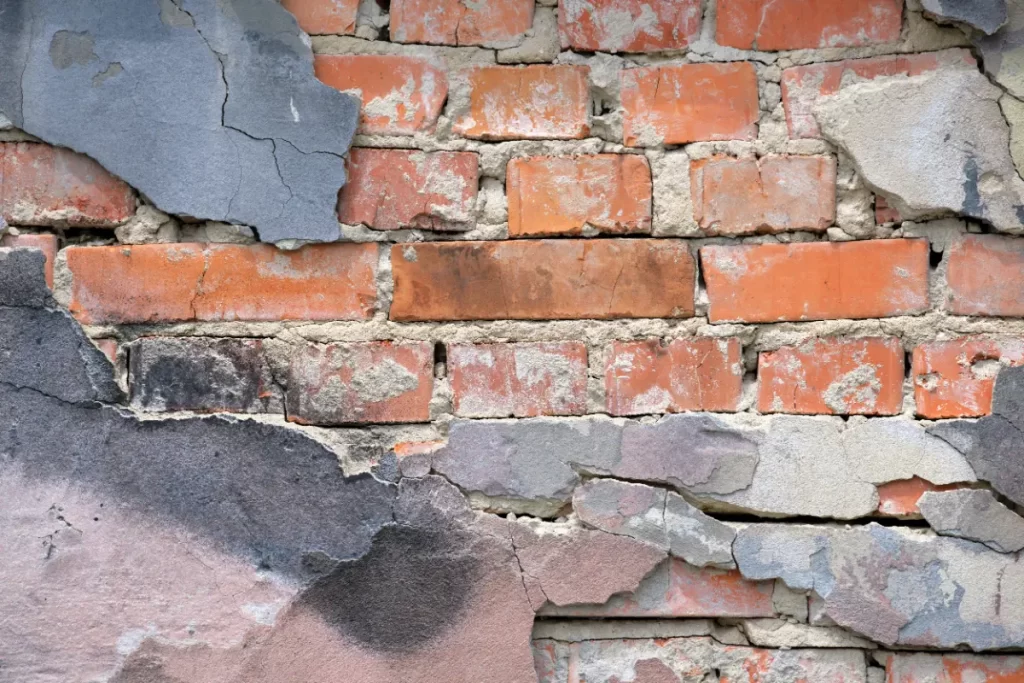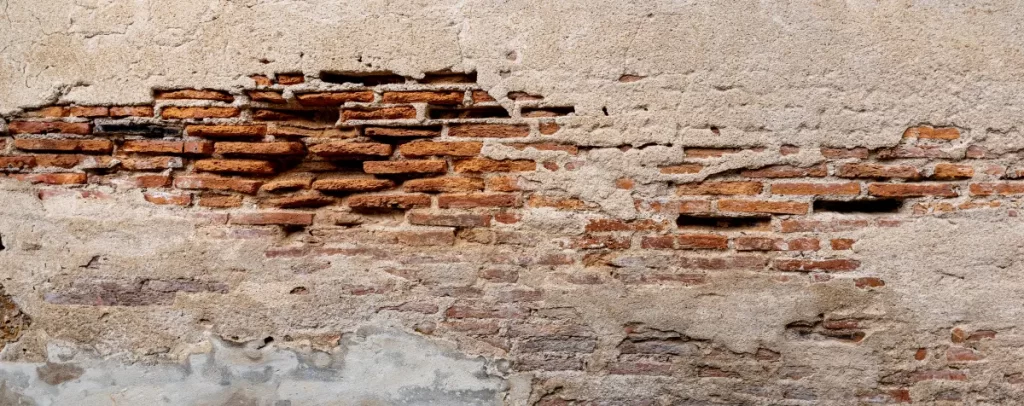Bricks, those steadfast blocks of clay, have built history one layer at a time. Yet, despite their durability, the passage of time leaves its mark, necessitating the art and science of brick restoration. Old brick, worn by weather and time, can lose its structural integrity and aesthetic appeal.
Brick restoration, therefore, is not just about preservation but also about reviving the beauty these bricks once radiated, often necessitating detailed cleaning and the careful insertion of mortar into the joints to uphold structural integrity. The process of restoring old bricks involves a meticulous examination of brickwork, identifying sections that require care, and making the necessary repairs without compromising the structure’s historical authenticity.
Whether it’s replacing deteriorated bricks or refreshing the mortar that bonds them, every step is a tribute to the masonry’s original craft. Reinstating old brick to its former glory requires an intricate balance of respecting the past while employing modern techniques to ensure longevity.
This revival goes beyond aesthetics; it’s about restoring life to buildings that are testaments to architectural history, often requiring comprehensive brick cleaning and meticulous brickwork restoration efforts.
Introduction to Reviving Old Bricks
Understanding the Basics of Brick Restoration
Brick restoration encompasses various techniques aimed at returning old bricks to their former glory. This process involves careful cleaning, repairing, or replacing damaged bricks and addressing issues with mortar to ensure the longevity and aesthetic appeal of brickwork.
It’s a delicate balance of preserving the original character while enhancing the structural integrity of masonry.
The Significance of Reviving Old Bricks
Reviving old bricks is not just about aesthetics; it’s a testament to our commitment to heritage conservation. This includes the extensive process of brickwork restoration, from brick cleaning to reapplying mortar into the joints.
By restoring brickwork, we maintain the historical integrity of buildings, reduce waste through recycling, and preserve the craftsmanship of past masons. This practice allows future generations to both enjoy and learn from our architectural heritage, emphasising the importance of ongoing maintenance like brick cleaning and brickwork restoration.
Historical Overview of Brick Manufacturing Techniques
The evolution of brick manufacturing techniques over centuries has resulted in a variety of brick types, each with unique characteristics. From sun-dried bricks of ancient times to the fired bricks used in modern construction, understanding these methods is crucial for effective restoration, as it helps identify the best approach to repairing and maintaining old brick structures without compromising their historical value.
Environmental Benefits of Recycling and Reusing Bricks
Recycling and reusing bricks not only conserves natural resources but also reduces the environmental impact of construction projects. By salvaging bricks from demolished buildings, we minimise waste in landfills and reduce the demand for new bricks, thereby lowering the carbon footprint associated with brick production.
Types of Bricks
Reclaimed Bricks
Reclaimed bricks, salvaged from old buildings, offer a sustainable option for construction and restoration projects. They carry the patina of age, adding character and warmth to new structures while ensuring environmental sustainability.
Fired Bricks vs. Sun-Dried Bricks
Fired bricks, baked in a kiln, are known for their durability and resistance to weathering, making them suitable for exterior brickwork.
Sun-dried bricks, though older and less durable, hold significant historical value and are often found in ancient structures. These bricks demand specialised restoration approaches, such as gentle brick cleaning and the application of colour wash to preserve their unique appearance.
Handmade vs. Machine-Made Bricks
The distinction between handmade and machine-made bricks is evident in their texture and appearance. Handmade bricks, with their unique imperfections, offer a rustic charm, whereas machine-made bricks provide the uniformity and precision necessary for particular design aesthetics.
Identifying Antique Brick Types
Identifying antique brick types involves examining their size, shape, colour, and texture, as well as assessing whether they need to be cleaned or restored to bring back their original charm.
This knowledge is crucial for restoration work, as it ensures that any replacement bricks or repair techniques are appropriate for the period and style of the building, maintaining its historical accuracy.
Assessing Brick Condition
Assessing the condition of masonry in historic buildings or a brick house requires a keen eye for detail and a deep understanding of the materials involved, including when and how the mortar is made and when it needs to be cleaned.
One of the first signs of deterioration to look out for includes the presence of stains, which can indicate moisture issues, or the emergence of loose bricks, which suggest underlying structural problems. To effectively diagnose such damage, experts often employ a range of tools and techniques. For instance, using a wire brush or a bristle brush can help scrub the exterior brick surfaces to reveal hidden issues like damaged mortar or the need for a more profound cleaning solution to remove stubborn stains.
Masonry experts play a critical role in evaluating brickwork, utilising their expertise to interpret signs of wear and advise on the appropriate masonry repairs. They might chip away at the sides of the brick with a chisel to inspect the old masonry’s condition or use a trowel to test the mortar’s integrity.
Advanced tools and technologies, such as diagnostic imaging or moisture meters, offer a non-intrusive means to assess the health of an old brick wall, ensuring the process of restoring does not inadvertently damage the bricks.
Moreover, when considering the brick restoration process, materials like lime mortar, known for its breathability and compatibility with historic masonry, are preferred. Our experts at Environ Property Services often recommend lime and sand mixtures, adjusted with additives like linseed oil or colour wash for decorative finishes, to match the colour and texture of the original mortar without compromising the structural integrity.
These techniques, combined with careful cleaning and the application of protective layers, ensure the restoration work preserves the building’s architectural integrity while extending its lifespan against environmental changes.
Architectural salvage companies also contribute by providing replacement mortar or bricks that match historical materials, ensuring a seamless restoration. They often play a crucial role in brickwork restoration by integrating mortar into the joints with precision.
Cleaning and Maintenance
The upkeep of masonry, particularly in historic structures, demands a nuanced approach to cleaning and maintenance. Methods for cleaning old masonry involve a balance between efficacy and preservation.
While chemical cleaning agents can offer powerful results, especially on stubborn stains, they might only sometimes be suitable for all types due to the risk of damaging the delicate mortar or causing paint to bubble on the surface.
Natural cleaning agents, such as a limewash or a simple solution of soap and water, provide a gentler alternative, effectively removing dirt without compromising the integrity of the masonry.
DIY enthusiasts often turn to rubber gloves and a brush to remove dirt and residual mortar, applying these solutions safely and effectively. This process highlights the need to be cleaned not only for aesthetic purposes but also for the preservation of the material.
For preventive maintenance, it’s advisable to regularly add water shedding measures, such as ensuring proper drainage to prevent moisture accumulation that leads to deterioration. Additionally, incorporating brick cleaning into the routine can further avoid the adverse effects due to exposure.
We at Environ Property Services can also recommend applying colour wash or other protective surface treatments specifically designed to be compatible with traditional mortars and host masonry in order to extend the lifespan of the structure.
These techniques ensure the masonry remains in pristine condition, safeguarding the architectural heritage for future generations.
Brick Restoration Techniques
Repointing Mortar Joints
Repointing involves removing old mortar from between bricks and replacing it with new mortar. This process is essential for restoring the structural stability of brickwork and preventing moisture penetration that can lead to further deterioration.
Replacing Damaged Bricks
When bricks are too damaged to be repaired, they must be replaced. Careful selection of replacement bricks is necessary to ensure they match the original in terms of size, colour, and texture, maintaining the aesthetic continuity of the brickwork.
Colour Matching and Aesthetic Considerations
Colour matching is critical in brick restoration to ensure new or repaired areas blend seamlessly with the original brickwork. Aesthetic considerations also include maintaining the historical character and architectural details of the structure.
Sealants and Protective Coatings
Applying sealants and protective coatings can help protect restored brickwork from environmental damage due to exposure, enhancing the longevity of the brick cleaning efforts.
These treatments should be breathable to allow moisture to escape, preventing issues such as spalling and moisture retention. Proper brick cleaning and restoration practices, including the use of appropriate fixing agents on the inside of plaster walls, are essential.
Reusing Bricks in Construction

In the realm of sustainable construction, the innovative reuse of old masonry as a building material embodies both creativity and environmental stewardship. Creative uses of such materials in new constructions not only imbue projects with a unique aesthetic but also contribute significantly to reducing waste.
For instance, a masonry company might incorporate reclaimed bricks into the facade of a new brick building, blending them seamlessly with new materials to create a visually appealing, textured look. This approach necessitates a rigorous selection process, ensuring the bricks you want to reuse are structurally sound and free from old paint, which might require scrubbing the bricks with soap and water and employing specific cleaning products.
Structural integrity considerations are paramount, as the performance of old masonry must align with modern building standards, including the removal of excess mortar and the application of fixing agents where necessary. Techniques like using a cold chisel to remove the old mortar and applying new, traditional mortars help maintain the durability of the construction.
Lime-based mortar is often preferred for its flexibility and compatibility with both old and new materials, facilitating the integration of reclaimed bricks without compromising the building’s integrity.
Furthermore, the role of reclaimed bricks in sustainable construction goes beyond mere aesthetics; it represents a commitment to reducing the environmental footprint of building projects. By selecting suitable bricks for reuse, employing careful surface treatments, and allowing mortar to dry correctly, builders can ensure these materials contribute effectively to the structural and environmental integrity of their projects.
This process not only conserves resources but also promotes a circular economy within the construction industry, marking a shift towards more responsible and innovative building practices.
Choosing Environ Property Services for Reviving Old Bricks
Environ Property Services stands out for its comprehensive approach to brick restoration and property services, emphasising quality, sustainability, and expertise. With a family-operated foundation, Environ brings over 15 years of dedicated growth and experience, specialising in a range of services that include damp proofing, pest control, and, notably, brick repointing and restoration.
At Environ Property Services, we use long-lasting lime mortar that ensures the structural integrity and aesthetic appeal of both historical and modern properties. Our meticulous attention to the use of appropriate materials and finishes, especially the use of lime mortar for period properties, underscores their commitment to preserving the architectural integrity of London’s diverse brickwork.
Environ’s approach to repointing and brick restoration is deeply rooted in traditional building techniques, tailored to match the original mortar’s characteristics in terms of softness, permeability, durability, and appearance.
Choosing Environ Property Services for reviving old bricks means opting for a service that values the heritage and future of your property equally.


